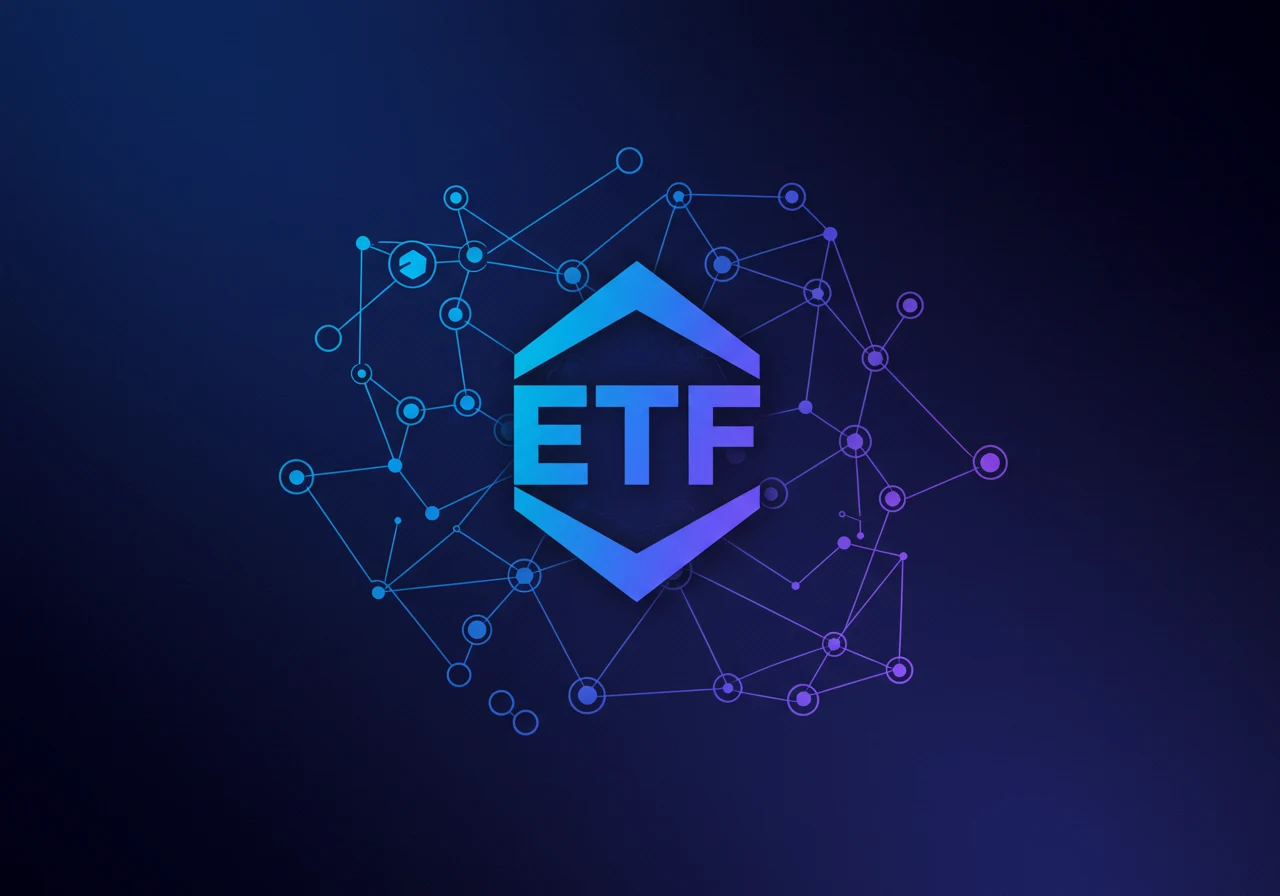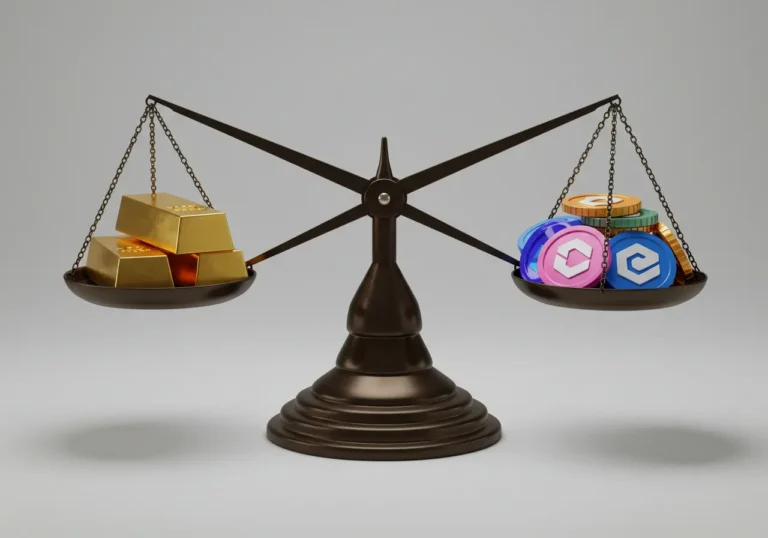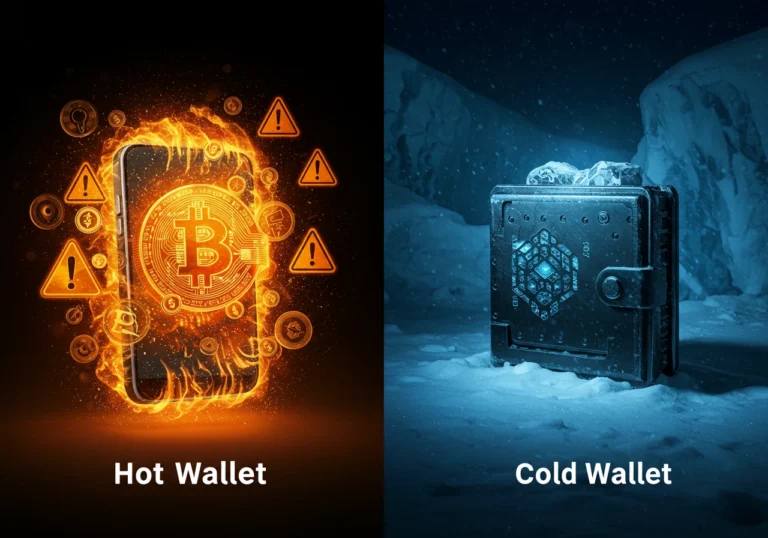What is an ETF in Crypto? A Guide to Investing in Bitcoin and Ethereum
What is an ETF in crypto — that’s the simple question we’ll answer first. Then I’ll walk you through how ETFs work, why people use them, the main benefits and risks, how to invest, and what regulators say. I’ll keep it plain and practical. Let’s go step by step.
What is an ETF in crypto

An ETF, or exchange-traded fund, is a type of investment product you can buy on many stock markets. A crypto ETF is a fund that owns cryptocurrency or tracks its price. When you buy a crypto ETF share, you are buying a slice of that fund. You do not hold the Bitcoin or Ethereum yourself. The fund does.
This matters because many people want exposure to crypto but do not want to manage private keys or use crypto wallets. A crypto ETF makes it easier. Think of it like buying a box of apples instead of planting an apple tree. You get the fruit without the watering can.
ETFs in cryptocurrency definition — the basics
An ETF pools money from many investors. It then buys assets — in this case, crypto like Bitcoin or Ethereum, or products that track their price. The fund issues shares. Those shares trade on a stock exchange, just like company stocks.
There are two main types of crypto ETFs:
- Physical-backed ETFs: The fund actually holds Bitcoin or Ethereum in custody.
- Futures-based ETFs: The fund holds futures contracts that track the cryptocurrency price rather than the coins themselves.
Both types aim to match the price movements of the underlying asset, but they do so in different ways.
Why investors use crypto ETFs
People choose ETFs for several simple reasons:
- Ease: Buy and sell on a regular brokerage account. No need for a crypto wallet.
- Regulation and custody: The fund custodian handles storage and security. This can feel safer for some.
- Tax and accounting simplicity: ETFs appear on regular brokerage statements, making taxes easier for many investors.
- Diversification options: Some ETFs bundle multiple cryptos or related assets, spreading risk.
If you are unsure about managing keys or worried about losing coins, an ETF can be a gentle way to start.
How to invest in cryptocurrency ETFs
Investing in crypto ETFs is similar to buying other ETFs or stocks. Here are the simple steps:
- Open a brokerage account if you don’t have one. Use a reputable broker.
- Search for the ETF ticker or name. Brokers list ETFs like any stock.
- Decide how much you want to invest. Start small if you’re learning.
- Place an order — market or limit — and confirm.
- Monitor your investment and set an exit strategy.
This process is familiar to many people who already invest in traditional finance. It takes away much of the friction of direct crypto ownership.
Pros and cons of cryptocurrency ETFs
It helps to weigh pros and cons of cryptocurrency ETFs before investing.
Pros
- Simplicity: No private keys or wallets.
- Accessibility: Available through normal brokerages and retirement accounts.
- Security handled by custodians: Professional custody solutions reduce personal responsibility.
- Liquidity: ETFs trade during market hours and can be bought or sold quickly.
Cons
- Fees: ETFs charge management fees that reduce returns over time.
- No direct ownership: You don’t control the underlying crypto. You can’t use it for payments or DeFi.
- Tracking error: The ETF may not perfectly match the crypto’s price.
- Regulatory or custodian risks: Fund rules or custody failures can affect you.
Both sides matter. Balance convenience with cost and purpose.
Best cryptocurrency ETFs to buy — what to look for
When looking for the best cryptocurrency ETFs to buy, consider these practical filters:
- Expense ratio: Lower fees save money long-term.
- AUM (assets under management): Larger funds often mean more liquidity.
- Custody methods: Who holds the crypto? Is the custodian reputable?
- Structure: Is the ETF physically backed or futures-based? Each behaves differently.
- Regulation and listing: Is it listed on a regulated exchange in your region?
Examples (for illustration only, not financial advice): several Bitcoin ETFs have launched in major markets. Some focus on Bitcoin alone, others on Ethereum, and some on derivatives. Always confirm current offerings in your region.
Regulation of cryptocurrency ETFs
Regulators play a big role in regulation of cryptocurrency ETFs. They assess risks and decide whether to allow ETFs to list.
- Why regulators care: ETFs touch regular investors. Regulators want to ensure fair pricing, custody safety, and clear disclosures.
- Differences by country: Some countries approved Bitcoin ETFs; others remain cautious. The rules depend on jurisdiction.
- What regulators require: Often stricter reporting, secure custody, and transparency about how the fund operates.
Before investing, check whether the ETF is approved in your country and what protections exist.
Bitcoin ETF vs Ethereum ETF — differences and similarities
Both Bitcoin and Ethereum ETFs aim to track prices, but the assets have differences:
- Bitcoin is often treated as digital gold — more focused on store-of-value.
- Ethereum powers smart contracts and decentralized apps, so its price drivers include network usage and upgrades.
A Bitcoin ETF may attract investors seeking price exposure to Bitcoin’s scarcity story. An Ethereum ETF offers exposure to Ethereum’s broader ecosystem growth.
Fees, tax, and practical considerations
- Fees: ETFs charge expense ratios. Over years, a 0.9% fee vs 0.1% can change returns significantly.
- Tax treatment: Taxes vary by country. ETFs may be taxed differently than direct crypto holdings. Consult a tax professional.
- Trading hours vs crypto markets: ETFs trade during stock market hours; crypto trades 24/7. Price gaps can occur.
Know these practicalities before you buy.
Risks and how to manage them
Every investment has risks. With crypto ETFs, common risks include market volatility, regulatory changes, and custodian issues.
Simple risk management tips:
- Only invest what you can afford to lose. Crypto is volatile.
- Diversify. Don’t put all funds into a single ETF or single asset.
- Set clear goals. Are you investing for long-term growth or short-term speculation?
- Rebalance. Periodically review your portfolio and adjust allocations.
A measured plan reduces panic when markets wobble.
Comparing direct ownership vs ETF ownership
Direct ownership means you hold private keys or use an exchange. ETFs mean a fund holds the crypto for you.
Choose based on what you want:
- Want to use crypto directly? Own it.
- Prefer simplicity and traditional accounts? Consider ETFs.
- Want a mix? Some people hold a small direct position and a larger ETF position for balance.
Both options have places in a thoughtful strategy.
How to pick a crypto ETF step-by-step
- Decide your investment goal.
- Check available ETFs in your region.
- Compare expense ratios and AUM.
- Read fund prospectus — understand custody and structure.
- Consider tax implications and consult a professional if needed.
- Buy through a trusted brokerage.
- Monitor and review periodically.
Keep steps short and clear. Small habits lead to better choices.
Conclusion — simple choices, clearer paths
As you consider what is an ETF in crypto, remember the core idea: it’s a way to gain exposure to Bitcoin and Ethereum without holding the coins yourself. ETFs offer simplicity, regulated structures, and traditional brokerage access. They also come with fees and differences from direct ownership.
For many people, ETFs are a sensible bridge into crypto markets. For others, direct ownership fits better. Either way, understand the structure, check the fees, watch regulation, and invest with a plan.
Quick bullet points — main takeaways
- What is an ETF in crypto? A fund that holds or tracks crypto and issues ETF shares.
- ETFs in cryptocurrency definition: Pool of assets trading on stock exchanges to track crypto prices.
- How to invest in cryptocurrency ETFs: Use a brokerage, search the ETF, set an order, and monitor your position.
- Pros and cons of cryptocurrency ETFs: Ease and custody benefits vs fees and lack of direct ownership.
- Best cryptocurrency ETFs to buy: Look for low fees, strong custody, and regulatory approval (research specific tickers in your region).
- Regulation of cryptocurrency ETFs: Varies by country — check local rules and defenses.
Frequently Asked Questions
Q: Can I buy a crypto ETF in my retirement account?
A: Often yes. Many brokers allow ETFs in IRAs or pensions. Check with your broker and consider tax implications.
Q: Are crypto ETFs safer than buying crypto directly?
A: “Safer” depends. ETFs remove personal custody risk but add counterparty, fee, and regulatory risks. They simplify security but don’t eliminate market risk.
Q: Do ETF holders get airdrops or staking rewards?
A: Usually no. ETF shares represent fund holdings; the fund decides how to handle airdrops or staking. Read the prospectus.
Q: Can ETFs be held 24/7 like crypto?
A: No. ETFs trade during stock exchange hours. Crypto markets operate 24/7, so ETF prices may lag during off-hours.
Q: How do I find the best cryptocurrency ETFs to buy?
A: Compare expense ratios, provider reputation, custody solutions, and regulatory status. Use broker research tools and read fund documents.

Hello, I’m Edmilson Dias, founder of CoinBringer. I created this platform to guide people through the fast-moving world of cryptocurrency with clarity and safety. With years of research in blockchain and digital security, my goal is to translate complex topics into practical knowledge, offering reliable tutorials, safety insights, and guidance for both newcomers and experienced users.
Discover more from CoinBringer
Subscribe to get the latest posts sent to your email.







